Digital Poster
Gradients & Their Behavior
ISMRM & ISMRT Annual Meeting & Exhibition • 10-15 May 2025 • Honolulu, Hawai'i

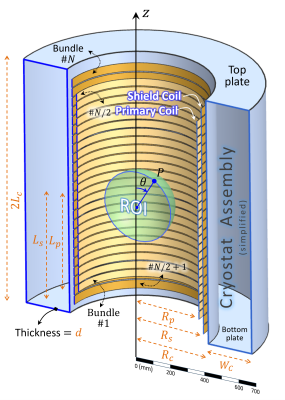 |
Computer Number: 97
3280. Eddy
Current Compensation for Z-Gradient Array Coils with Constraints
on Copper and Cryostat Losses: An Electromagnetic Approach
M. Takrimi, E. Atalar
Bilkent University, Ankara, Turkey
Impact: Our approach enables regulation of time-average
eddy and copper losses and compensate for secondary fields
in gradient array coils, enhancing imaging fidelity while
allowing dynamic tuning of magnetic profiles, thereby
advancing the performance of modern MRI systems.
|
|
 |
Computer Number: 98
3281. On
the source of unresolved Nyquist ghosting in EPI at high and
ultrahigh field
H. Scholten, I. Homolya, H. Köstler
University Hospital Würzburg, Würzburg, Germany
Impact:
Residual Nyquist ghosting in EPI at 7T can be reduced by avoiding or correcting for mechanical oscillations of the gradient coils. A deepened understanding of this effect allows for more reliable correction strategies and less confounded functional or diffusion-weighted MRI. |
|
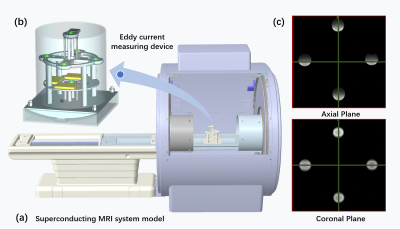 |
Computer Number: 99
3282. Eddy
current measuring device for gradient correction with
shielded‐coaxial‐cable coils
Q. Liu, X. Song, K. Yuan, C. Liu, Y. Gao, L. Chen, B. Qiu
University of Science and Technology of China, Hefei, Anhui, China
Impact:
By precisely quantifying the magnitude and distribution of eddy currents, MRI system engineers and researchers can develop effective correction algorithms that mitigate their impact on image quality. A dedicated eddy current measurement device necessitates a high-isolation to acquire MR signals. |
|
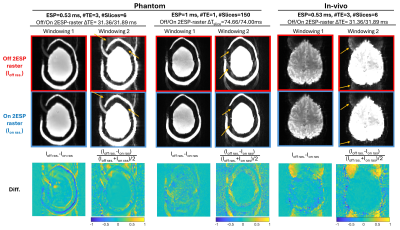 |
Computer Number: 100
3283. Acoustic
Spectrum and Ghosting in EPI: Timing is Everything (and it is
Not Just Echo Spacing)
A. Seginer, R. Schmidt
Weizmann Institute of Science, Rehovot, Israel
Impact: Subtle control of slice timing and echo-times
can reduce EPI-ghosting artifacts. Furthermore, proper
modeling of acoustic modes, should allow replacing the
current restrictive forbidden echo-spacings logic in
sequences with a less restrictive vibration
power-prediction.
|
|
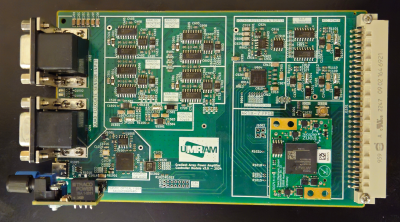 |
Computer Number: 101
3284. Scalable
Gradient Array Power Amplifier Design Using Digital Current
Feedback
E. Aydın, M. E. Öztürk, M. Takrimi, E. Atalar
Bilkent University, Ankara, Turkey
Impact: Although the benefits of gradient arrays over
conventional systems have been largely theoretical, our
scalable, high-performance gradient array controller makes
it possible to drive a large number of channels at a
fraction of the cost.
|
|
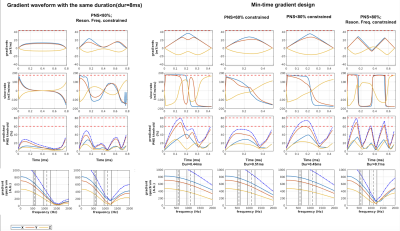 |
Computer Number: 102
3285. Safer
Non-Cartesian Gradients for Your Subject and Scanner
J. Yang, J-F Nielsen, Y. Jiang
University of Michigan, Ann Arbor, United States
Impact: Our simulation results demonstrated that our
proposed method can constrain the PNS limits and requested
energy in frequencies bands. We also showed the potential of
design safer non-Cartesian trajectories for rapid imaging.
|
|
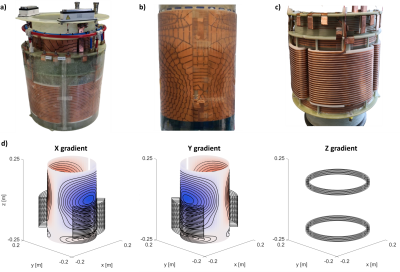 |
Computer Number: 103
3286. Enhanced
gradient capabilities at 7T using a three-axes plug-and-play
head gradient insert.
G. Arends, C. Tax, C. van Leeuwen, M. Wienke, W. Schuth, T.
Roos, J. Siero, D. Klomp, E. Versteeg
UMC Utrecht, Utrecht, Netherlands
Impact: Plug-and-play gradients provide a cost-effective
alternative to expensive MRI systems with dedicated
high-performance gradients. They improve accessibility for
researchers with limited resources to conduct advanced
diffusion, structural, and functional MRI experiments.
|
|
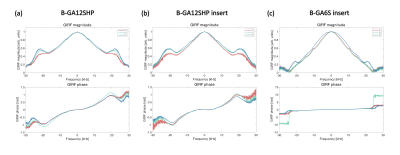 |
Computer Number: 104
3287. GIRF
Characterization of Three Preclinical High-Performance Gradient
Systems at 9.4T
O. Goedicke, A. Jaffray, A. Yung, M. E. Ladd, T. A. Kuder,
A. Rauscher, S. A. Reinsberg
German Cancer Research Center (DKFZ) Heidelberg, Heidelberg, Germany
Impact: We measure and compare the impulse response of
different high-performance gradient systems at 9.4T. This
marks the first step towards assessing and correcting for
the imperfections and resulting artifacts of such hardware.
|
|
 |
Computer Number: 105
3288. Computational
Study of the Effect of Orthopedic Plates on Gradient
Field-Induced Peripheral Nerve Stimulation in MRI
L. Yang, X. Yang, H. Ye, N. Kaula, J. Zheng, J. Chen
University of Houston, Houston, United States
Impact: The observed reduction in PNS thresholds
suggests that individualized risk assessments may be
necessary for MRI screenings of patients with orthopedic
implants.
|
|
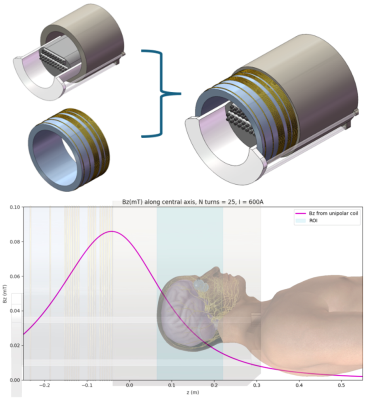 |
Computer Number: 106
3289. An
Integrated Unipolar Ultrasonic Gradient for Mitigating PNS and
aliasing in accelerated silent MRI
K. Meng, M. McGrory, D. Klomp, J. Siero, E. van Riel, E.
Versteeg
University Medical Center Utrecht, Utrecht, Netherlands
Impact: The presented ultrasonic unipolar gradient coil
is designed to be plug-and-play and fit in an existing
RF-transmit coil, ensuring ease-of-use while achieving a
gradient-efficiency of 0.25 mT/m/A. The boost in
gradient-performance can be used to yield fast and quiet
scans.
|
|
 |
Computer Number: 107
3290. Open
Source Gradient Systems using a single carrier for the OSI2 MRI
Scanner
S. Littin, F. Jia, M. Häuer, J. Pfitzer, B.
Wilhelm-Feldbusch, M. Prier, P. Amrein, L. Keppeler, M.
Zaitsev
University Medical Center Freiburg, Faculty of Medicine, University of Freiburg, Freiburg, Germany
Impact: We enable others to replicate and easily adapt
MRI gradient coil designs. This includes all post-processing
steps which allows to altered the designs to specific
requirements.
|
|
 |
Computer Number: 108
3291. Reassessment
of Peripheral Nerve Stimulation thresholds for the Impulse
model-optimized asymmetric head gradient coil
D. Feinberg, S. Ma, E. Walker, A. Beckett, D. Rattenbacher,
E. Rummert, P. Dietz, M. Davids, N. Boulant
University of California, Berkeley, Berkeley, United States
Impact: As we explore unprecedented gradient performance
at 7T, new observations of Impulse gradient PNS thresholds
are reported to avoid unnecessary subject discomfort,
demonstrate variables affecting gradient coil PNS testing,
and offer opportunity to improve gradient coil modeling of
PNS.
|
|
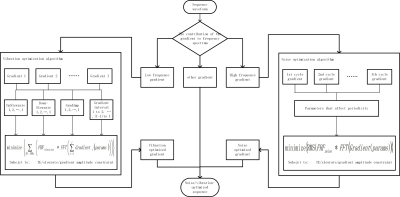 |
Computer Number: 109
3292. Sequence
noise and vibration optimization based on frequency response
function
T. Jiang, J. Wang, L. Wen, Z. Shuai, Z. Zhou, P. Hu
ShanghaiTech University, shanghai, China
Impact: This method has potential to minimize the
gradient induced noise and vibration within the allowable
adjustment range of parameters. Together with the hardware
optimization in the main frequency band of the sequence
vibration, it can potentially improve subject comfort
significantly.
|
|
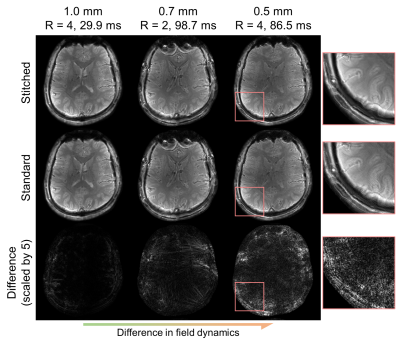 |
Computer Number: 110
3293. A
stitching method for dynamic field monitoring using NMR probes:
validation in simulation and human experiments
J. Zhang, Z. Zuo, R. Xue, Y. Zhuo, C. Cushing, A. Bratch, E.
Auerbach, A. Grant, J. An, K. Ugurbil, X. Wu, Z. Zhang
State Key Laboratory of Brain and Cognitive Science, Institute of Biophysics, Chinese Academy of Sciences, Beijing, China
Impact: Validated with both simulation and real data
experiments, our proposed stitching method capable of
characterizing challenging imaging gradients using
commercially available hardware is believed to have a
promise to advance many ultrahigh resolution MRI
applications at ultrahigh field.
|
|
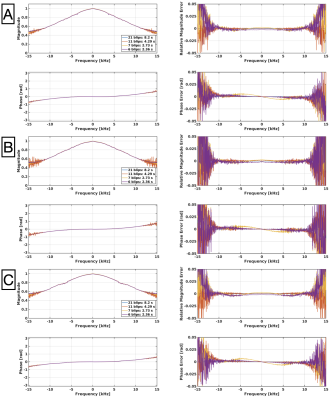 |
Computer Number: 111
3294. Rapid
Acquisition of the Gradient Impulse Response Function using a
Cryo-coil at 9.4 T
A. Jaffray, A. Yung, O. Goedlicke, S. Reinsberg, A. Rauscher
University of British Columbia, Vancouver, Canada
Impact: Pre-clinical MR imaging systems often use
application-specific hardware configurations which may
influence mechanical resonances and system performance. A
rapid GIRF acquisition protocol will streamline frequent
system characterization. Rapid GIRF acquisition may enable
new strategies for probing gradient system linearity.
|
|
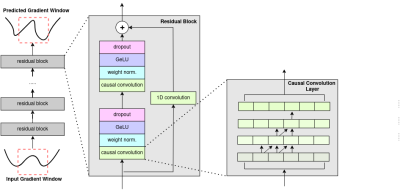 |
Computer Number: 112
3295. Improved
Image Reconstruction and Diffusion Parameter Estimation Using a
Temporal Convolutional Network Model of Gradient Distortions
J. Martin, H. Alderson, J. Gore, M. Does, K. Harkins
Vanderbilt University Institute of Imaging Science, Nashville, United States
Impact: Nonlinear gradient errors do dramatically impact
image quality but may be remediated with an accurate
nonlinear model. Having a more accurate model of gradient
distortions may allow for greater flexibility in the
gradient waveforms used in MRI.
|
The International Society for Magnetic Resonance in Medicine is accredited by the Accreditation Council for Continuing Medical Education to provide continuing medical education for physicians.